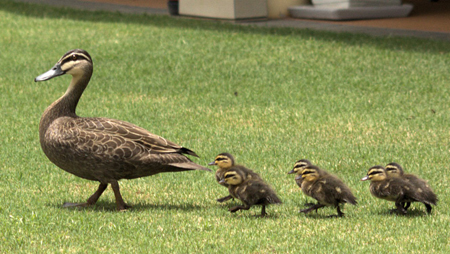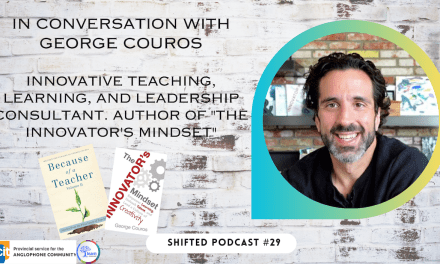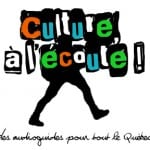I still remember the day I went to our local school to inquire about registering my daughter for kindergarten. It was going to be a big step for her, and I vaguely felt it would also be a change for me. Being new to the area and not knowing anything about the local school, I was a bit nervous about the kind of environment it had to offer. So I was pleasantly surprised as well as quite shocked when the young secretary who took my information looked up at me and said: “Welcome Mrs. Dufour. I bet you don’t remember me.” Turns out I had been her teacher in CEGEP some years back. It was an impromptu visit, very informal, but the welcome I received as well as what I saw of the school left me with a good impression of the people and the place. As a result, I felt good about the school in general and about my daughter’s kindergarten teacher in particular.
This happened quite a while before Gordon Neufeld became known for his attachment-based developmental approach of how children come to realize their potential as human beings along with the role that adults play in this process. I had no framework to understand the effects of my positive attitude towards my daughter’s new teacher on her transition into kindergarten. According to Neufeld, by liking her teacher I was giving my daughter implicit “permission” to create an attachment to that new person in her life, to trust her and follow her directions.

https://en.wikipedia.org/ (CC BY-NC)
As an educator, I now like the light shed by Neufeld’s attachment focus on a child’s transition into kindergarten. I like the guidance his view can provide to educators who plan a welcoming process for parents and children. It offers an interesting framework which can shape that plan and give it an overarching meaningful objective, that of creating a bond with both parent and child in order to allow that child to feel securely dependant on their teacher, their other “mother duck”.
What would transition welcoming activities look like if we took as our premise that this is the year in which a child can get off on the right foot by creating a strong attachment to you, their teacher? There are so many variables which come into play when putting together welcoming transition activities that it’s impossible to give a single recipe for success. So I’ll just try to give ideas about some goals to achieve and examples of what could be put in place to get there.
There are essentially three major moments that create opportunities for “making a good impression”: before school starts, at the time of school entry, and at key times throughout the year. In this blog, we’ll just look at the first one.
Meeting the parents and children in May-June
The process could start with a parent-child meeting in May or June. Its purpose would essentially be to make both parent and child welcome and to instil the seed of a positive mindset towards the school and the teacher.
- Focus on the child.
There would be a cordial and personalised welcome. You could greet each child individually, at eye level, saying his name and staying focused on him. Then only would you greet the parent! Parents are about to entrust their precious children to you. They’ll appreciate that you focus on them first and foremost. - Create a shared experience
You would plan something that both parents and children would enjoy doing together in the school environment. It could be a picnic, sharing a snack, or playing school yard games, perhaps the kind the parents would have played when they were young. In this way they can talk about what they did as a child and connect themselves to the school experience. - Put both at ease about the larger school environment
Include a visit of the school in the plan. Why not do it in the form of a game? Perhaps a little rally through the school in which both parent and child discover all its areas together at their own pace. This type of approach also shows the parent how they can expect their child to learn in your class: by being active participants rather than passive listeners. - Address parents’ information expectations
Of course parents would get any pertinent documents that will tell them about such things as when school will start, how the first few days will be organised, what they need to know about bussing, etc. This is not yet about the program, your expectations, your pedagogy, the school rules, etc. That can come later. With this you are responding the adults’ expectations and you are reassuring them with the basic information they need to be ready for the fall entry. - Make both parent and child feel special
When it’s time to go, you would make sure to thank each parent and child individually for their participation and let them know you’re looking forward to seeing them again in September. You might give each child a little booklet in which they can present themselves and their family in a variety of ways. This would help maintain the parent-child conversation about school alive and positive throughout the summer. Ask them to bring it back with them in the fall. If the school playground is open to the public, you could invite them to use it.
Of course, all these types of activities are multi-purpose. They also allow you to observe the children in different contexts: language, motor development, social interactions. These observations could be used to help balance groups when there is more that one K class in the school.
What you do may be very different from these examples given the great variety of school and community contexts. But if the focus is clear you should be able to find a way to help the child see you as an attachment figure with the parent’s blessing.
You will still need to provide more information to parents about the program, about your classroom practices and expectations, about school rules and regulations, about bussing, about daycare, and the list goes on. Keeping this for a separate occasion allows you to plan with adults in mind who will have your undivided attention. You, on the other hand, will have a better opportunity to get to know them: their backgrounds, prior experiences with school, with authority figures and with learning, their expectations or fears. All these you will have to uncover in order to make them your allies and your partners. The quality of that partnership will have an impact on their child’s connection to you.
What are some ways you (or teachers you know) welcome parents and children in your school? I’d love to hear from you!
Related resources
Fédération des syndicats de l’enseignement. Projet entrée progressive au préscolaire, Revue Préscolaire, Vol. 47, no 2, avril 2009.
Neufeld, G., & Maté, G. (2013). Hold On to Your Kids: Why Parents Need to Matter. Toronto: Vintage Canada.
Robillard, R. (2015) Merci! Revue Préscolaire, Vol. 53, no 1, Hiver 2015, 20-21
Dossier : La collaboration école-famille. Revue Préscolaire, Vol. 51, no 4, Automne 2013.
“What IS Attachment and How Do You Get It?”. Mothering.com. Retrieved 2016-04-24
(http://www.mothering.com/articles/what-is-attachment-and-how-do-you-get-it/)
“AuthoritATIVE Parenting, not AuthoritARIAN Parenting”. Mothering.com. Retrieved 2016-04-24
(http://www.mothering.com/articles/authoritative-parenting-not-authoritarian-parenting/)





Back when we had Laurentian School Board ( now part of Sir Wilfrid Laurier), there was a visionary Kindergarten teacher named Evelyn Aung-Thwin who coined a concept called P.O,D, day at Laurentian Elementary School. The acronym was for Parent Orientation Day. The idea was that kids are the peas, and parents are the sturdy POD … peas do not grow well without a sturdy POD!
The focus of the event is not on the student but rather on alleviating the stress that so many parents deal with reliving their own school memories and struggle and addressing their concerns.
School today is a team approach so our parents here at Grenville are met by the team each spring including the Principal, the Resource teacher and the CLSC nurse and when available the Dental hygienist. What is missing is a dietician but there is always room for improvement. Specialists observe the visiting children in a special class with a teacher in a brief one hour school visit.
It is not perfect but it is a start. Evelyn Aung-Thwin deserves the credit for the wonderful insight and wisdom that subsequent teachers at LES and throughout our board brought to life- in fact the concept was brought to a Kindergarten network meeting of Laurentian Teachers back in 1998 when Helen Daigle was a K teacher at St. Adele! Prior to this time (1992) it had not been done anywhere in the province.
Thanks for posting important research that supports what we do here.
Lys Chisholm
Grenville Prek and K teacher